

|
|
A Gassan Sadakazu Katana
w/ His excellent horimono
Sayagaki by Tanobe Michihiro sensei
signed, Naniwa Gassan Unryūshi Sadakazu
Dated, Genji two 1865
NBTHK Tokubetsu Hozon
-SOLD / No longer Available for purchase-



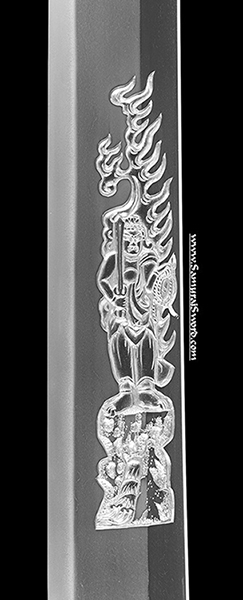
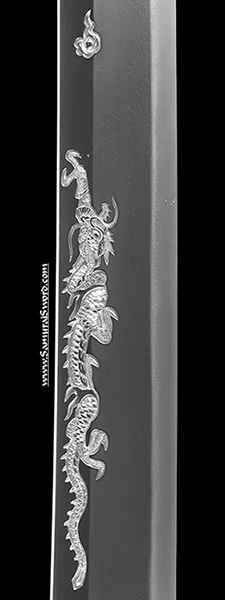
Swordsmith: Gassan Sadakazu (1834-1918)
Period: Shinshinto / Late Edo 1865
Location: Settsu
Approx measurements: Nagasa (cutting edge length): 72.9 cm ~ 28.75"; Sori (curvature): 1.3 cm; Motohaba (width): 3.3 cm; Overall 97.6 cm, length at kissaki 4.4 cm; Mihaba at mune machi 3 cm; Mihaba at Yokote 2.4 cm; Kasane at mune machi 8.4 mm; Kasane at Yokote 6.64 mm
Hada: Ko-itame
Hamon: medium Suguha
Horimono: Fudo, God of War; Dragon chasing fireball, done by Sadakazu*
Nakago: ubu, one mekugi-ana
Signature: Naniwa-jū Gassan Unryūshi Minamoto Sadakazu tsukuru
(浪花住⽉⼭雲⿓⼦源貞⼀造)
‒“Made by Gassan Unryūshi MinamotoSadakazu, resident of Ōsaka.”
Dated: Genji ni kinoto-ushidoshi nigatsu hi (元治⼆⼄丑年⼆⽉⽇‒“On a day
of the second month Meiji two (1865), year of the ox.”
Certificate: NBTHK Tokubetsu Hozon (a sword Extraordinarily Worthy of Conservation by the Society for the Preservation of the Japan Art Sword)
Sayagaki:
浪華⽉⼭雲⿓⼦貞⼀
元治⼆年紀有之作域ノ多彩ナル同⼯中直刃出来⽽彼ノ眞⾯⽬ヲ發揮セリ刃⻑貮尺四⼨五厘有之
惟時平成拾九歳神無⽉下
澣探山邉道鍳誌「花押」Naniwa Gassan Unryūshi Sadakazu
Dated Genji two 1865. This blade is interpreted in suguha, which was one of the manifold styles
of the smith, and truly shows the character of Sadakazu.
Blade length ~ 72.9 cm
Examined and written by Tanzan Hendō
[Tanobe Michihiro] in the last third of October of Heisei 19(2007) + kaō
Ratings:
Fujishiro's reference: Jo Jo Saku (Above Superior made)
Koshirae: Older mounts with; iron tsuba: water dragon & gold accents; fuchi-kashira with waves/water; Menuki: flower; Saya: a black/brown lacquer
Included: Koshirae, Shirasaya, carry bags
Note: In 1906 he was nominated as Teishitsu Gigei In (帝室技芸員) (Craftsman authorized by the Imperial court). This was a title equivalent to today’s Living National Treasure. *On the horimono- References do not list anything explicitly on which occasions Sadakazu used the "hori do saku" and on which not. Looking through his other blades it appears that he only started to add the "hori do saku" later in his career. We know later in his career his son Sadakatsu was making daisaku. Because this blade was made in 1865, and that Sadakatsu was only born in 1869 it is likely that horimono was in fact done by Sadakazu even if not explicitly mentioned by him, i.e. with inscribing hori do saku.
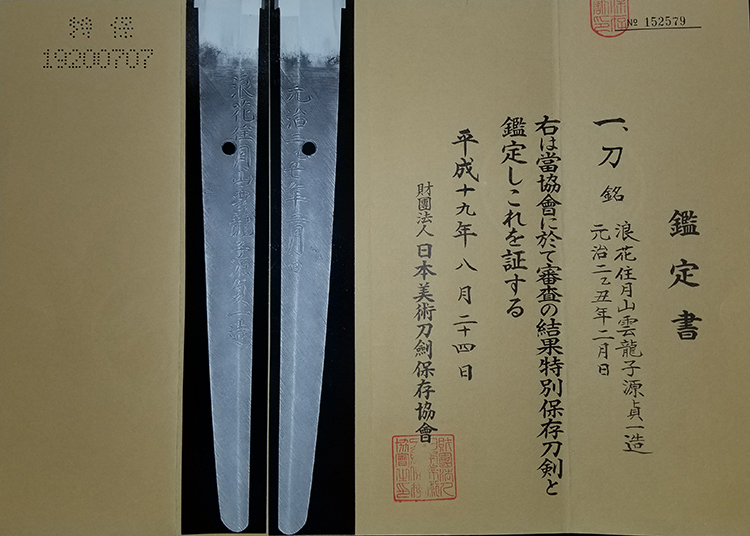
Certificate translation
K
ANTEI-SHO (鑑定書) - APPRAISALNo 152579
katana, signed:
Naniwa-jū Gassan Unryūshi Minamoto Sadakazu tsukuru(浪花住⽉⼭雲⿓⼦源貞⼀造)‒“Made by Gassan Unryūhi Minamoto
Sadakazu, resident of Ōsaka.”
Genji ni kinoto-ushidoshi nigatsu hi (元治⼆⼄丑年⼆⽉⽇‒“Onaday
of the second month Meiji two (1865),
year of the ox.”According to the result of the shinsa committee of our society, we judge this work as authentic
and rank it as tokubetsu-hozon-tōken.
August 24, 2007
[Foundation]
Nihon Bijutsu Tōken Hozon Kyōkai, NBTHK (⽇本美術⼑劍保存協會)
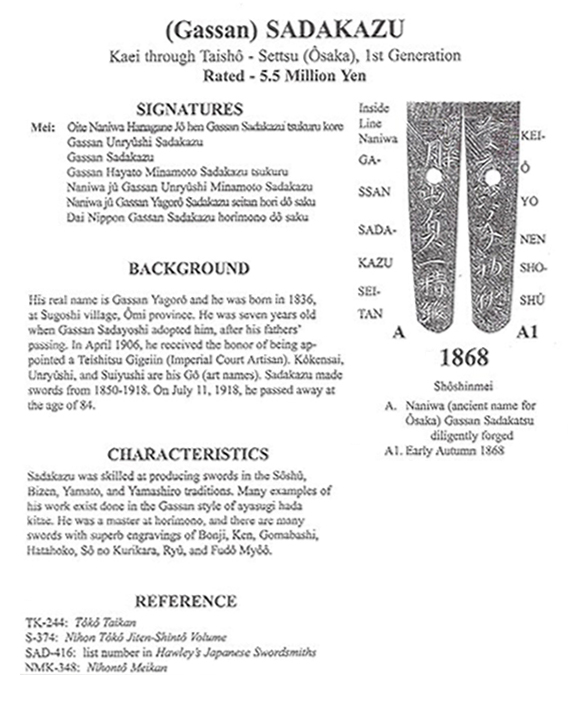
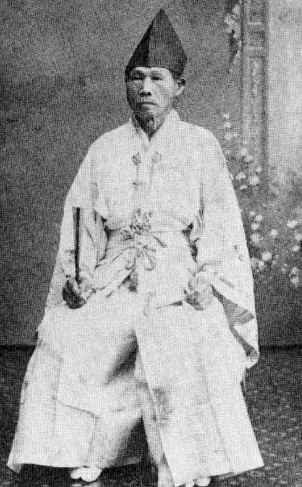
The Gassan school (
月山)The time-honoured
kotō Gassan school was taken-up again in the shinshintō times by Sadachika (貞近). Sadachika, his civilian name was „kuyama Yasaburō (奥山弥三郎), was born in Meiwa eight (明和, 1771) in Sasagawa (笹川) in the Nishimurayama district (西村山郡) of Dewa province. It is said that he was a descendant of the Gassan lineage and he died on the 19th day of the fifth month of Kaei four (嘉永, 1851) at the age of 81. But the actual revival of the school has to be attributed to Sadachika´s son Gassan Yahachirō(月山弥八郎) who adopted the name „Gassan" as his family name and who signed „Sada-yoshi" (貞吉). Some old transmissions say that Sadayoshi was born in the first year of Tenmei (天明, 1781) and died on the 19th day of the second month of Meiji three (1870) at the age of 90. But in Tenmei one his father Sadachika was only ten years old and so another transmission is much more likely, namely that he died in 1870, not at the age of 90 but 71. This, in turn, calculates his year of birth as Kansei two (寛政, 1800). However, Sadayoshi left Dewa in the early years of the Bunsei era (文政, 1818-1830) and went to Edo to study under Suishinshi Masahide. After that, i.e. in Tenpōfour (天保, 1833), he moved to Ōsaka where he laid the foundation for the more recent success story of the Gassan school. We know blades from Sadayoshi from the Bunsei to the end of the Keiōera (慶応, 1865-1868). His jihada is the typical Gassan ayasugi, a masame in the Yamato tradition, or a dense mokume. The hamon is either a suguha in nie-deki, a small-dimensioned chōji-midare, or a koshi-no-hiraita midare. It is said that his adopted son Sadakazu made several daisaku-daimei works for him in his later years.Sadakazu
(貞一), who bore the civilian name „Gassan Yagorō (月山弥五郎), was born in the second month of Tenpō seven (天保, 1836) in the village of Sugoshi (須越) in the Inugami district (犬上) of Ōmi province. He was adopted by Sadayoshi at the age of seven. In Meiji 39 (明治, 1906) he was appointed teishitsu-gigei´in (帝室技芸員, lit. „ember of the Imperial Arts and Crafts"), the equivalent to the later title of Living National Treasure. He and Miyamoto Kanenori (宮本包則) were the only swordsmiths awarded with this honour. The teishitsu-gigei´in program was founded by the Meiji government in 1890 to preserve the traditional arts and crafts. – 125 –Sadakazu´s
gō were Kōkensai" (光顕斎), „nryūhi" (雲龍子) and „uiyūhi" (水勇子). He died on July 11th 1918 at the age of 84 and we know from him dated blades from the third year of Kaei (嘉永, 1850) – he was only 15 years old at that time – to his year of death in 1918. That means he was active as swordsmith for about 70 years. He mastered all traditions and is regarded, besides Honjō Yoshitane (本荘義胤) and Kurihara Nobuhide (栗原信秀), as the greatest horimono engraver of the shinshintō times. Some suggest Suishinshi Masahide as the founder and Gassan Sadakazu as the last great master of the shinshintō. Sadakazu also played an important role in passing-on the craft to the subsequent gendaitō swordsmiths. His blades have a rather long nagasa, a shallow sori, a wide mihaba, and a chūor an ō-kissaki, i.e. altogether a magnificent and grand shape, but he also made some blades with a sugata in the style of the early Muromachi period. Incidentally, blades made in the Keiōera (慶応, 1865-1868) are especially impressive. He also made many copies of kotō works and worked for the military after the sword ban where more slender and shorter blades were needed. He forged the traditional ayasugi-hada of the Gassan school, a masame in the Yamato tradition, a mokume, a kokume and also an itame. According to the tradition he worked in, he tempered an elaborate chōji-midare in nioi-deki with a narrow yakihaba and long ashi in the style of the Ōei-Bizen school (応永備前), a ko-chōji-midare in ko-nie-deki, a chū-suguha-hotsure in the style of the Yamashiro tradition, or a gunome-midare with thick nie and nioi and plenty of hataraki in the style of the Sōshū tradition. The bōshi shows a roundish kaeri or runs out as yakitsume. He applied many different horimono like dragons, dragon and plum branches, kenmaki-ryū, waterfalls, Fudō-Myōō, bonji and the like. All of them are finely engraved and some remind us of carvings by Ikkanshi Tadatsuna (一竿子忠綱). Sadakazu´s blades show a long and carefully finished tang with a kurijiri and sujikai-yasurime with keshōwhereas each file stroke is exactly applied. During the Keiōand Meiji era he added a characteristic koku´in (see picture 90), and in the fifth year of Taishō (1916) he forged a tachi on the occasion of the enthronement of emperor Yoshihito (嘉仁, 1879-1926).*Gassan School information: Courtesy - Markus Sesko (Author), E Nihon-shinshintō-shi (pages 124-125), Click to purchase
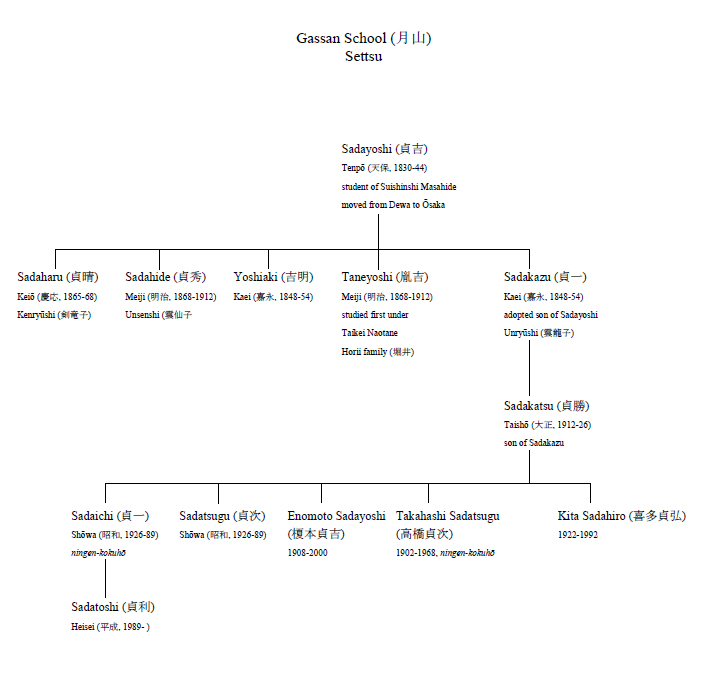
*Book page image: Courtesy - Markus Sesko (Author), E Genealogies and Schools of Japanese Swordsmiths (page 96), Click to purchase
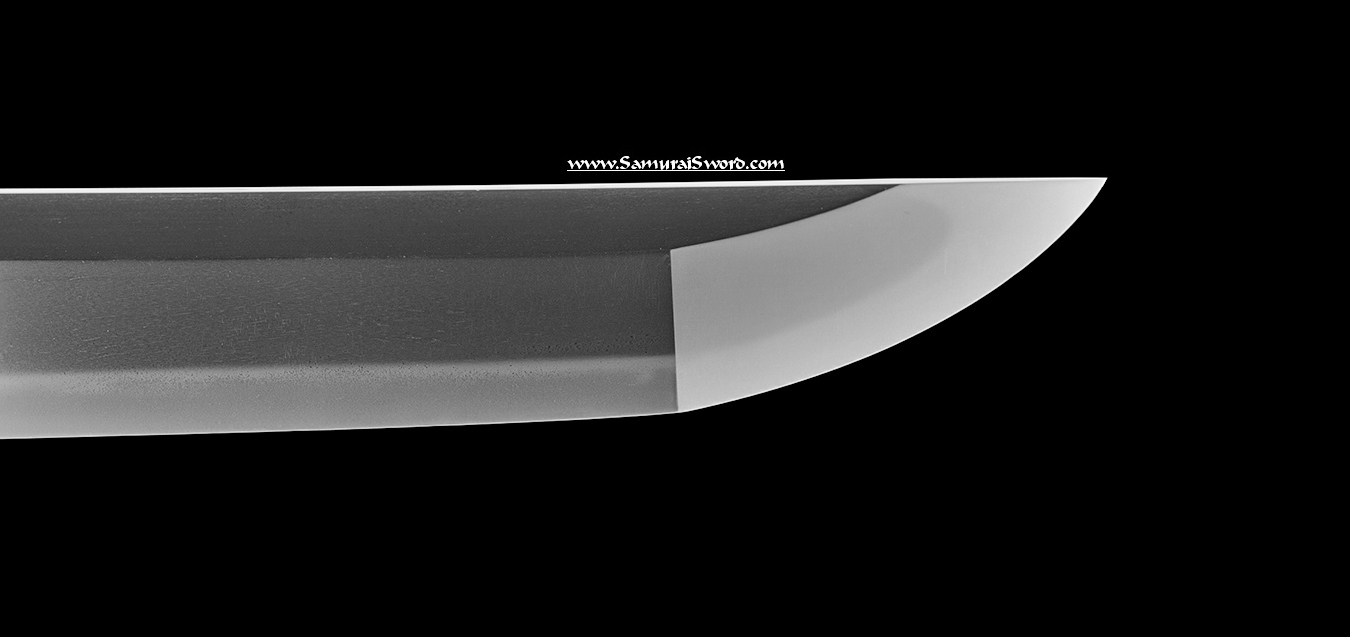
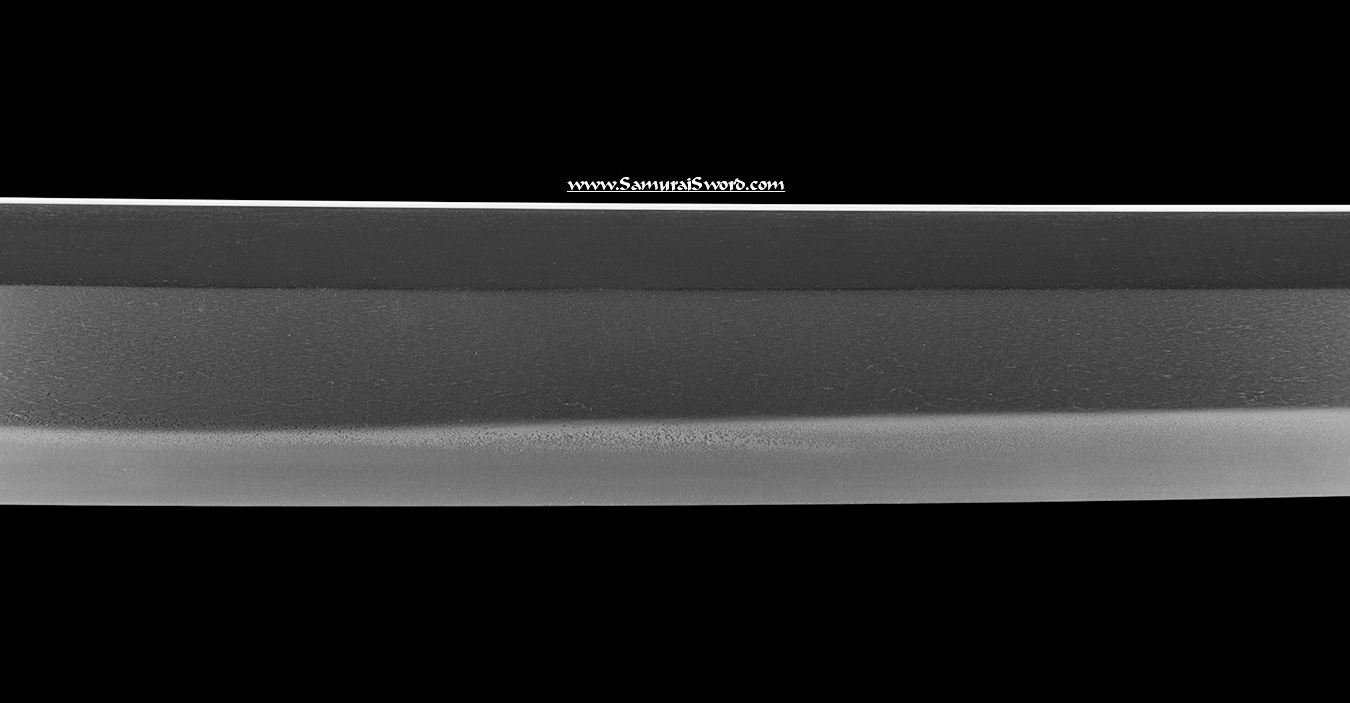
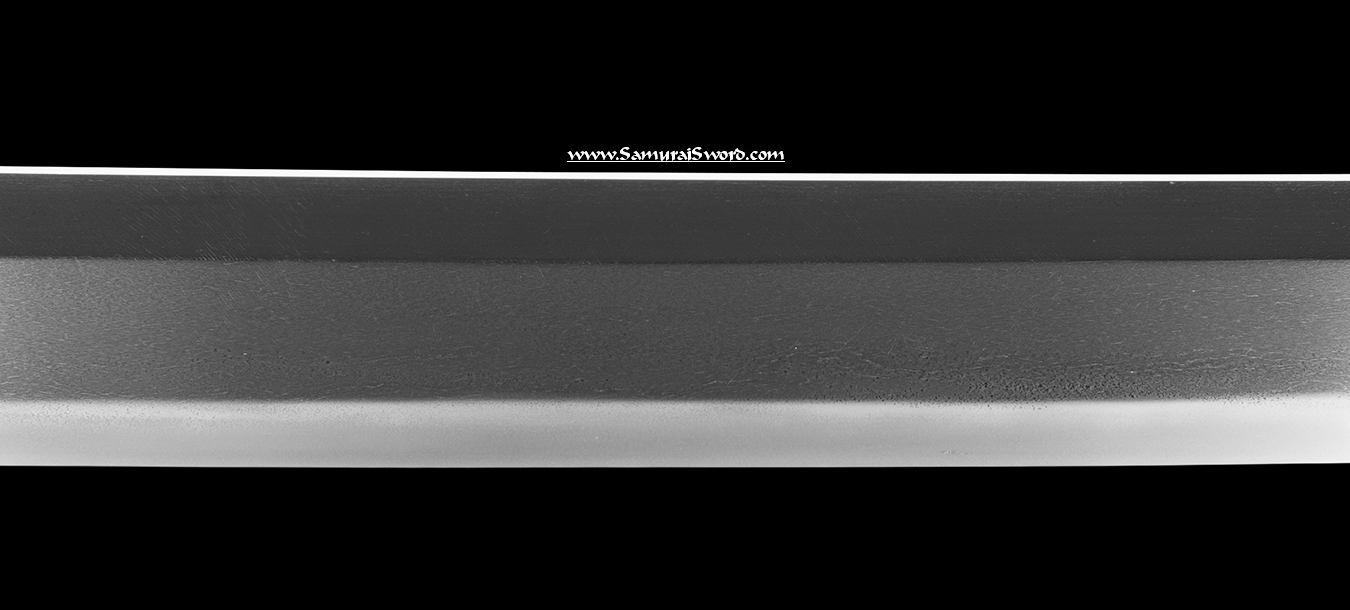
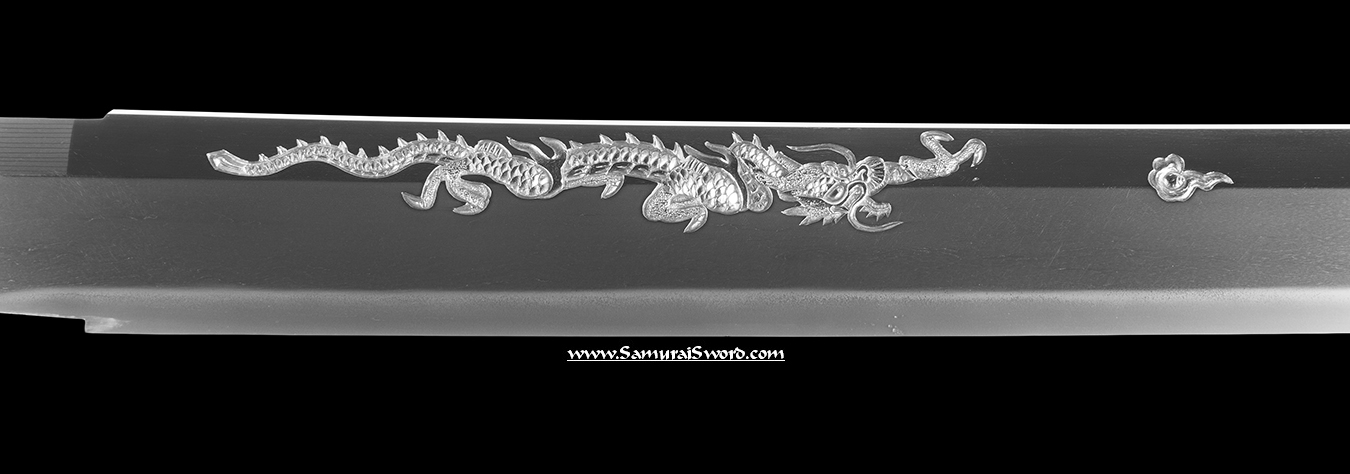

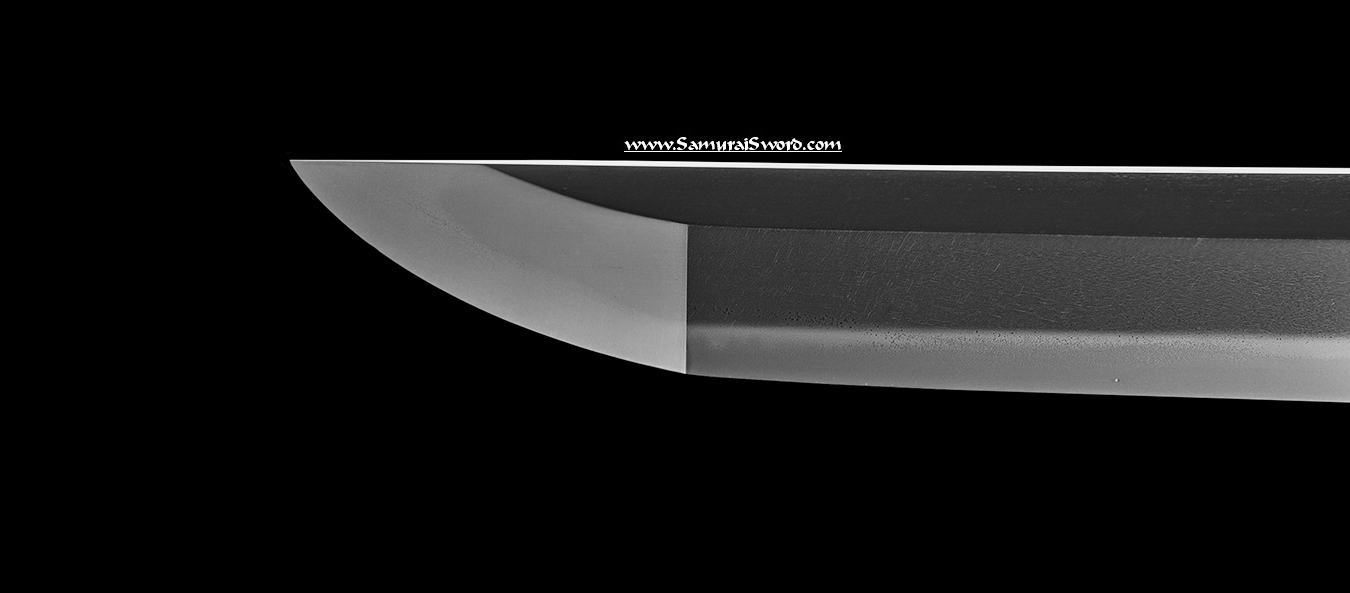
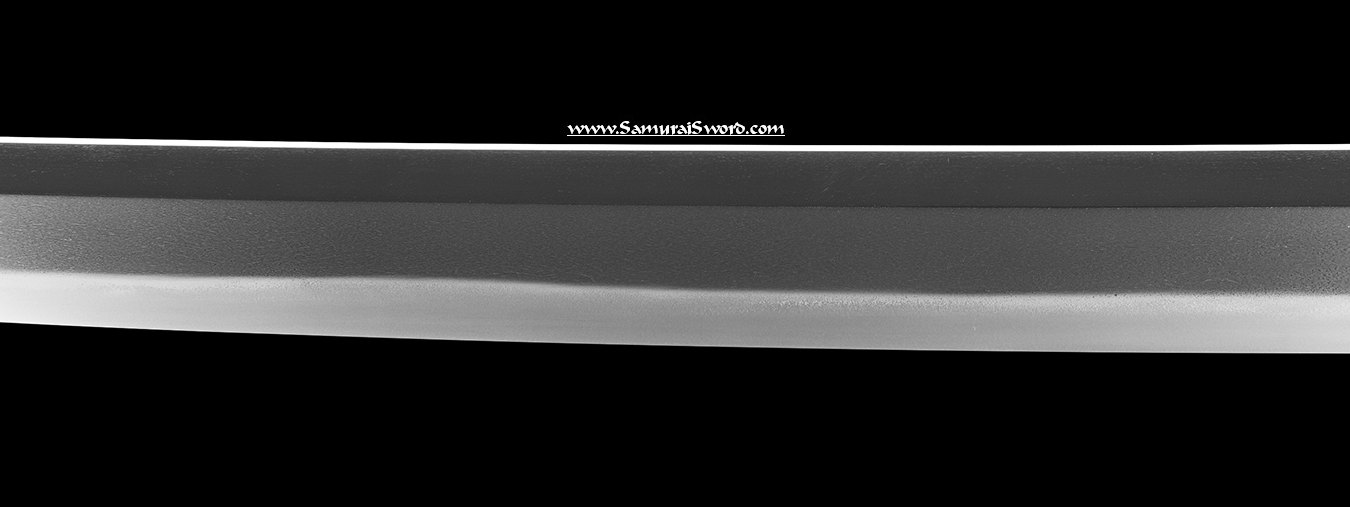
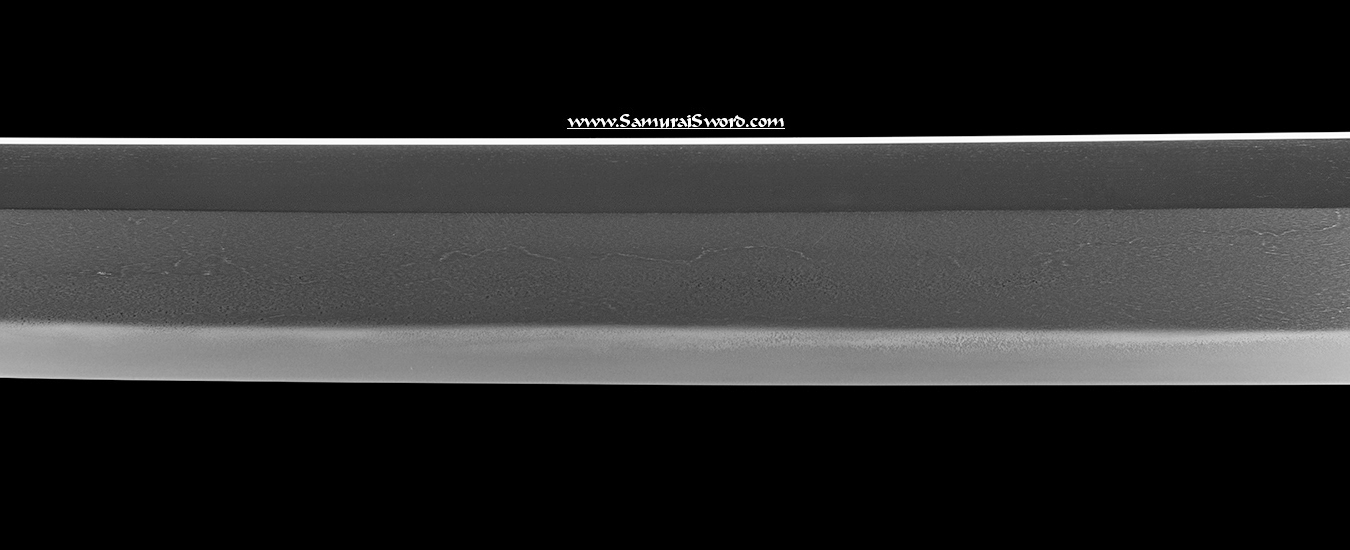
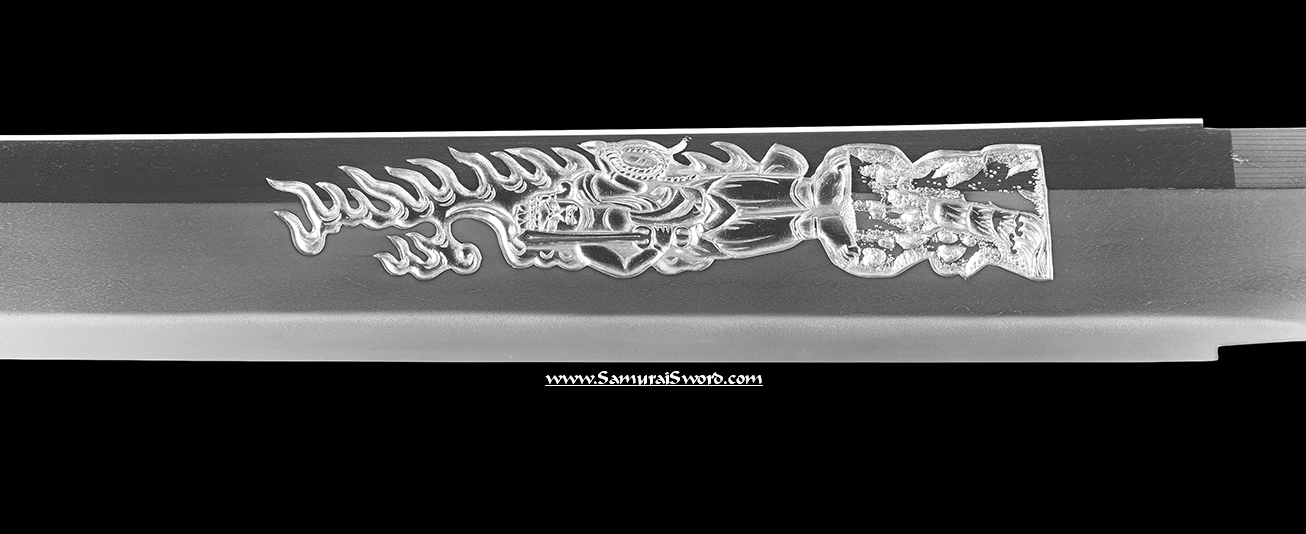

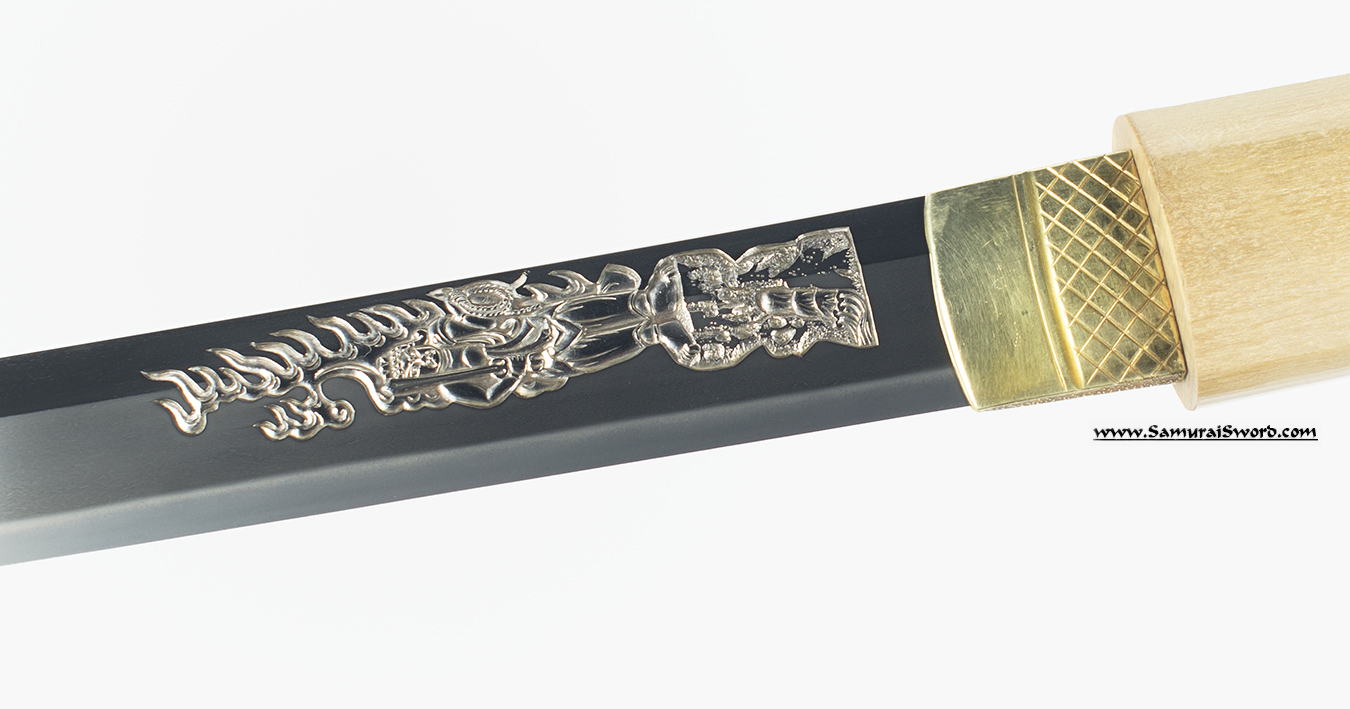

Sayagaki translation
浪華⽉⼭雲⿓⼦貞⼀
元治⼆年紀有之作域ノ多彩ナル同⼯中直刃出来⽽彼ノ眞⾯⽬ヲ發揮セリ刃⻑貮尺四⼨五厘有之
惟時平成拾九歳神無⽉下
澣探山邉道鍳誌「花押」Naniwa Gassan Unryūshi Sadakazu
Genji ninenki kore ari, sakuʼiki no tasai naru dōkō-chū suguha deki shikamo kare no majime o
hakki-seri.
Hachō 2 shaku 4 sun 5 rin kore ari.
Koretoki Heisei 19-nen kannazuki kakan Tanzan Hendō kanshi + kaõ
Naniwa Gassan Unryūshi Sadakazu
Dated Genji two 1865. This blade is interpreted in suguha, which was one of the manifold styles
of the smith, and truly shows the character of Sadakazu.
Blade length ~ 72.9 cm
Examined and written by Tanzan Hendō
[Tanobe Michihiro] in the last third of October of Heisei 19(2007) + kaō
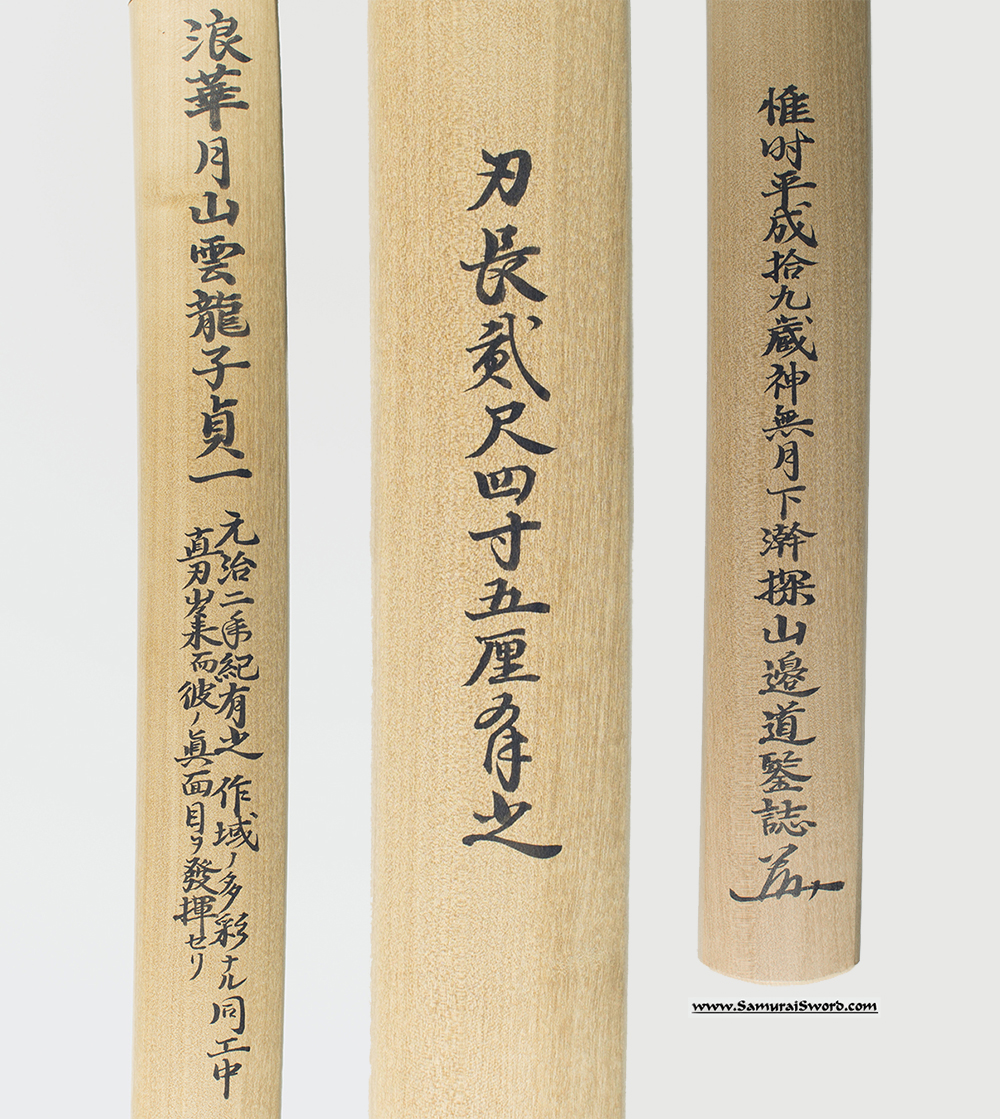


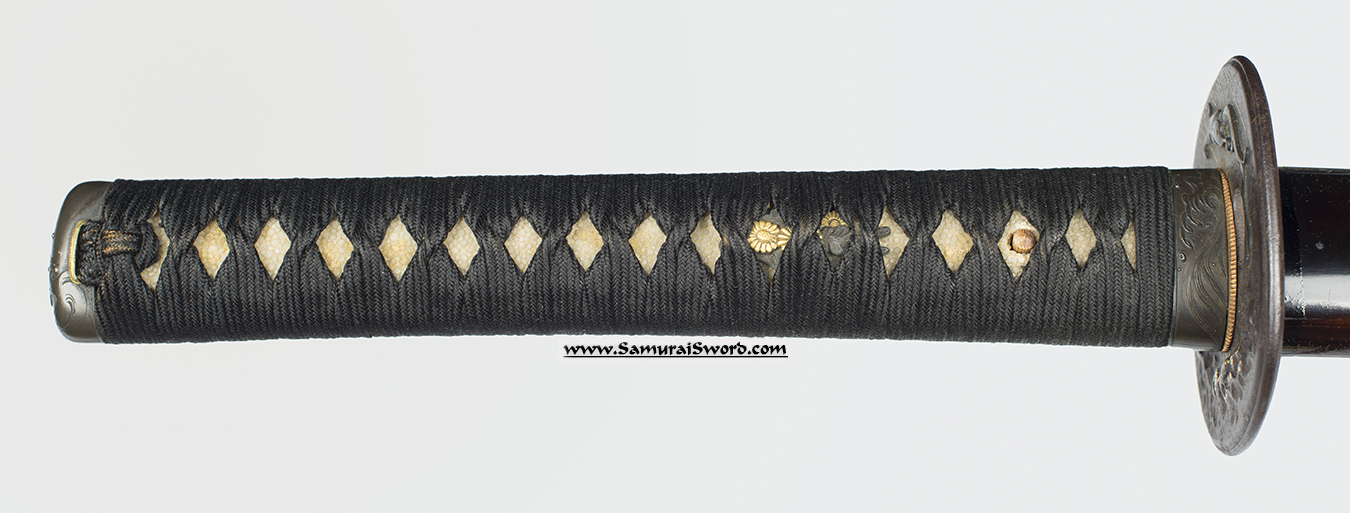
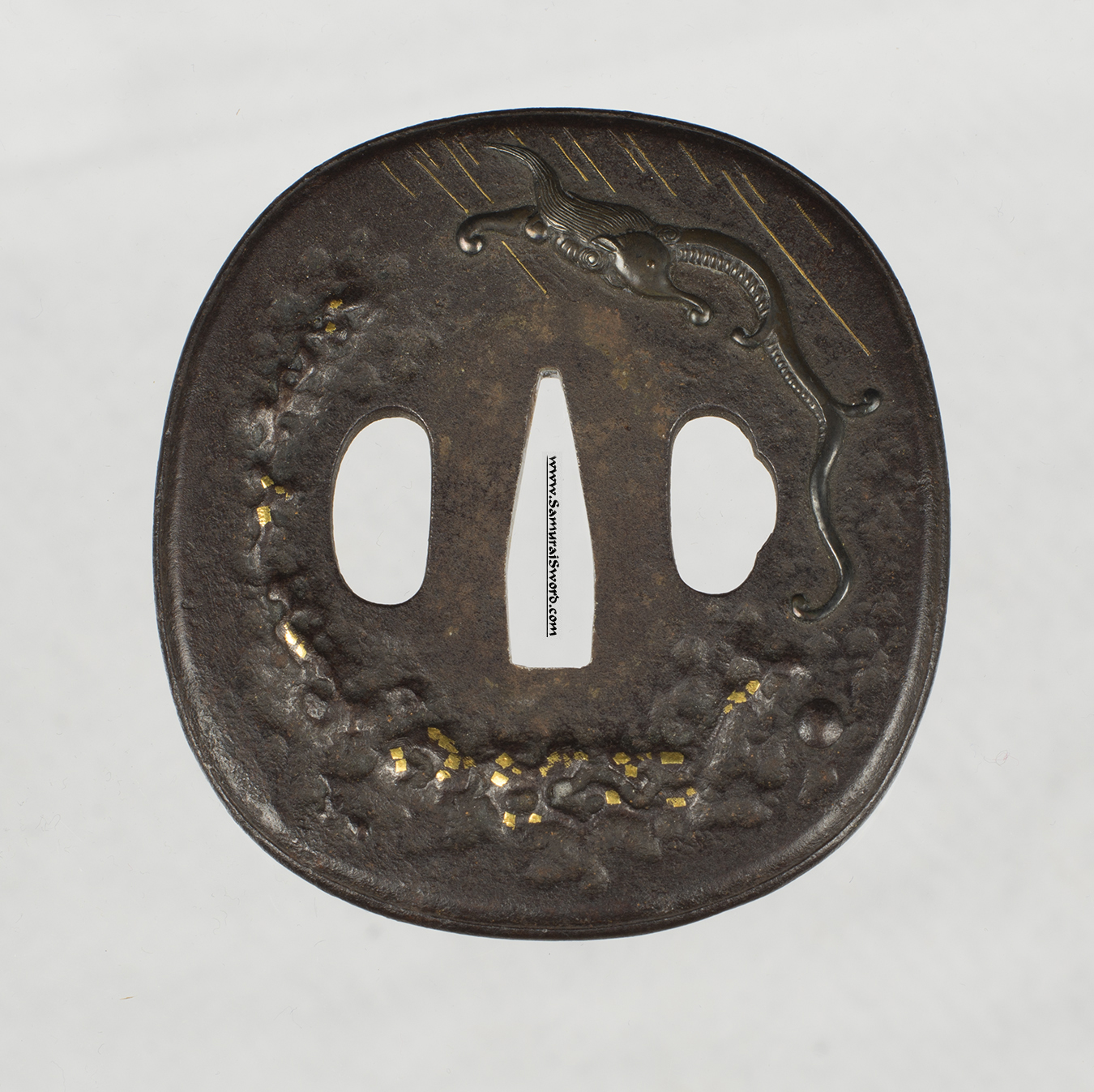
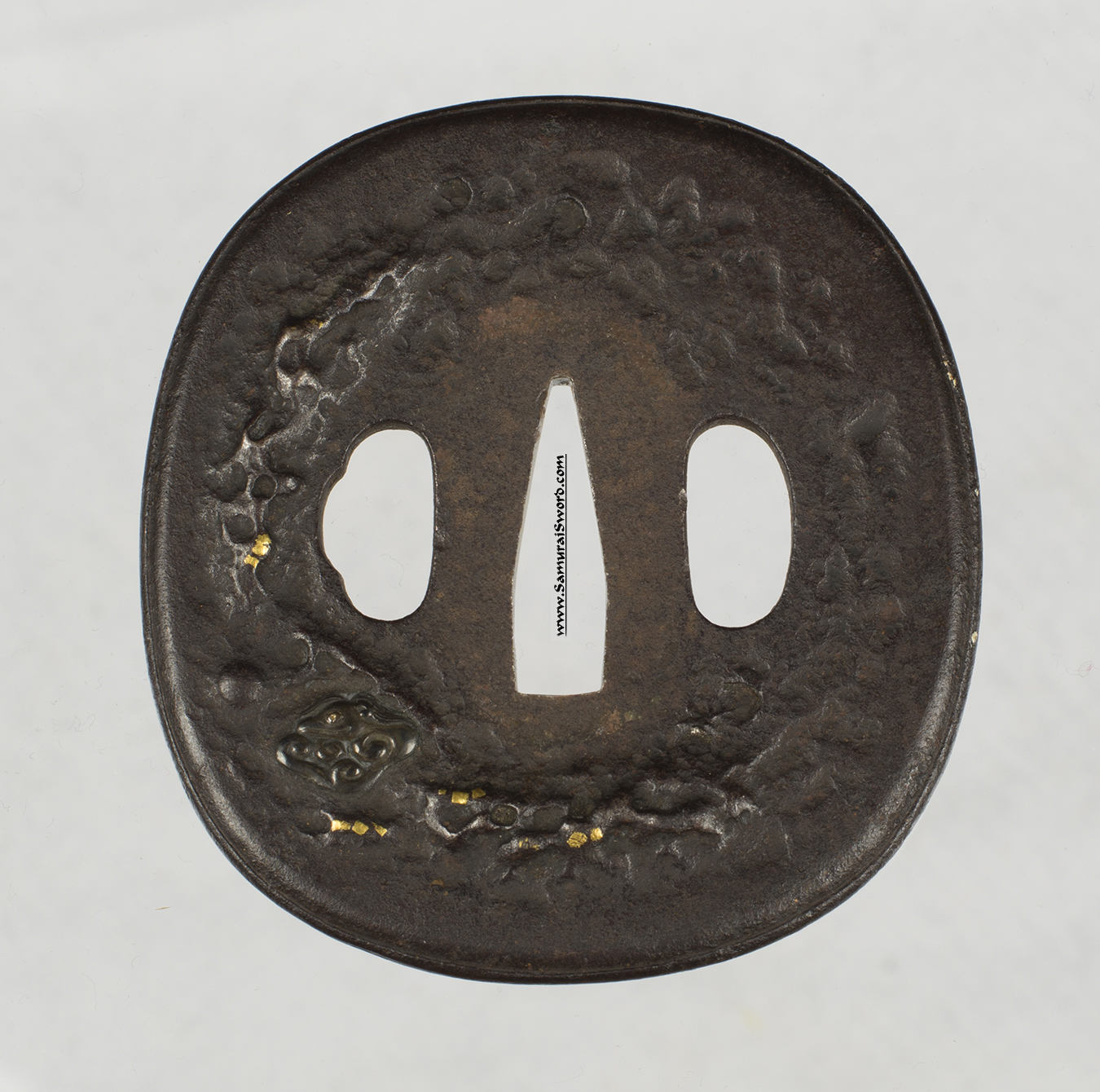
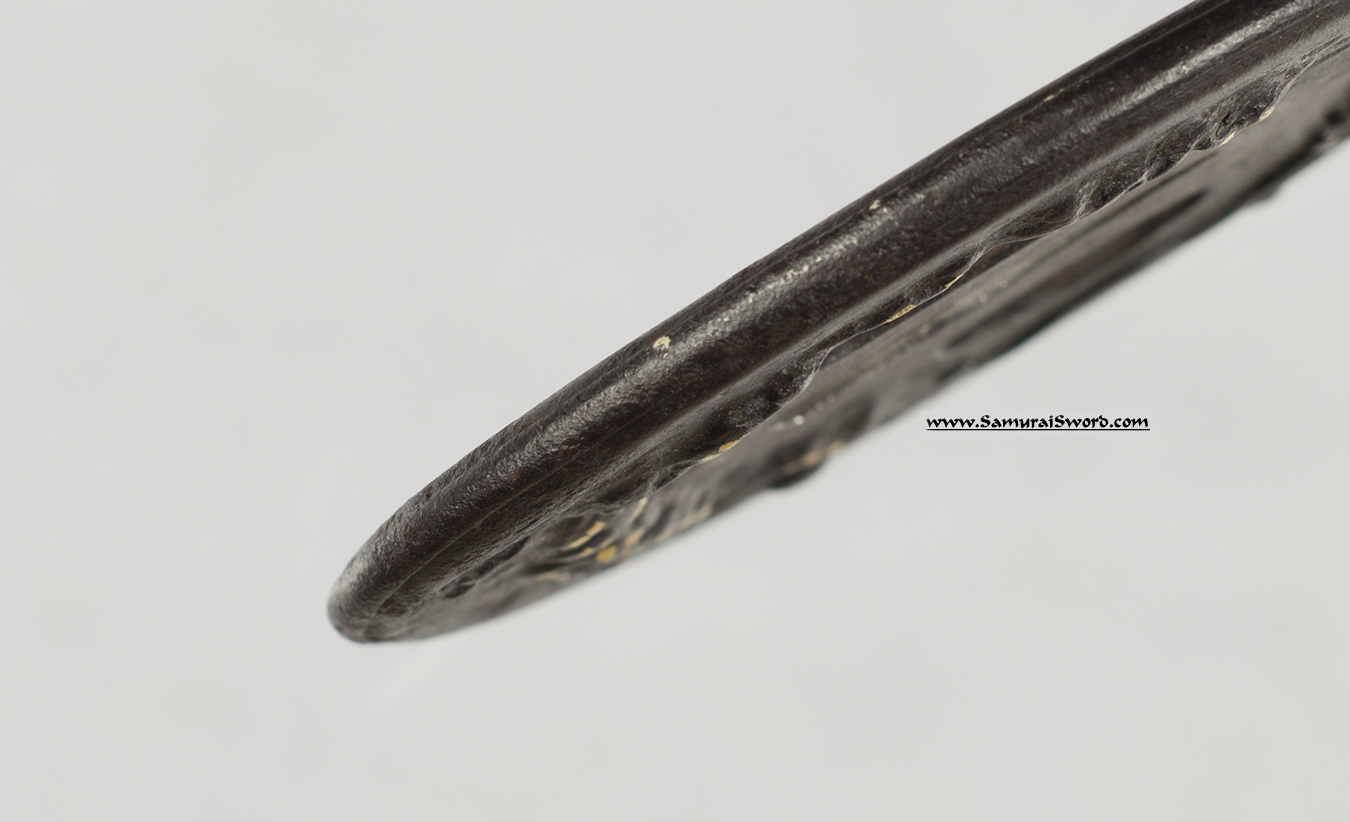

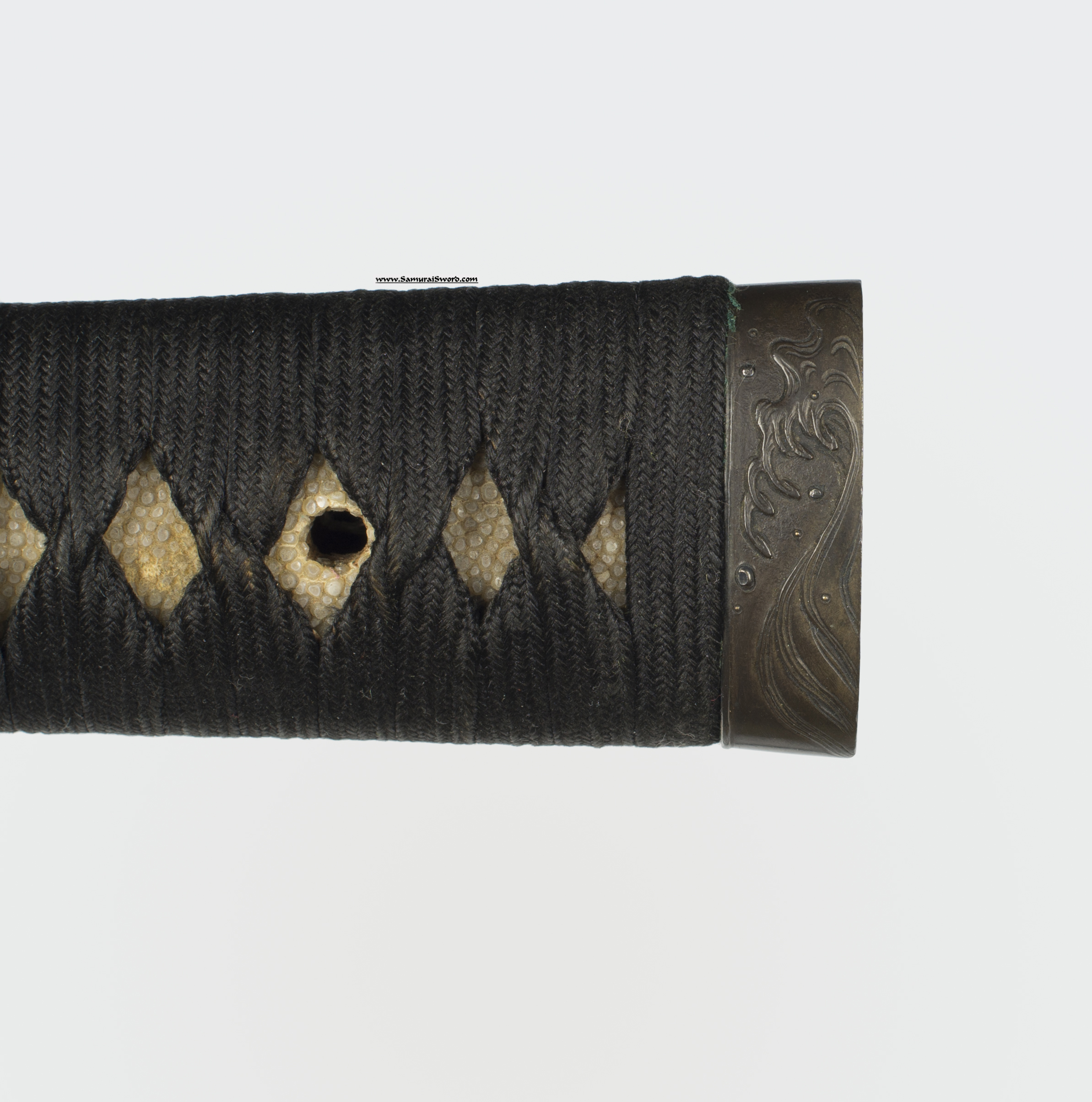
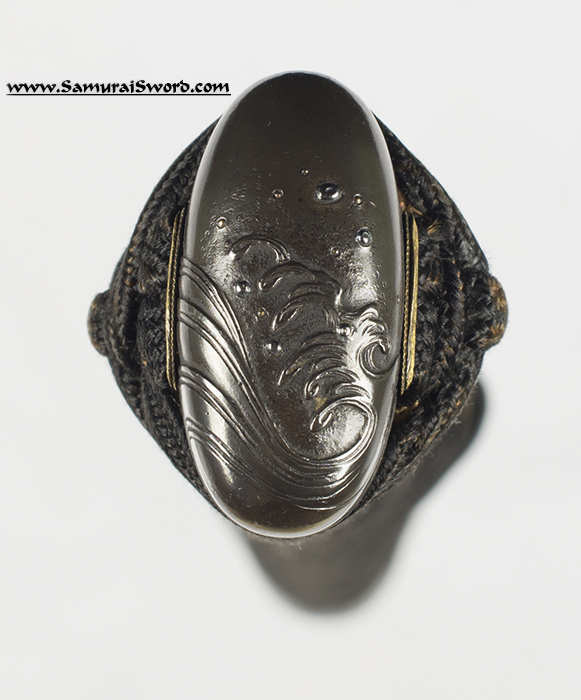
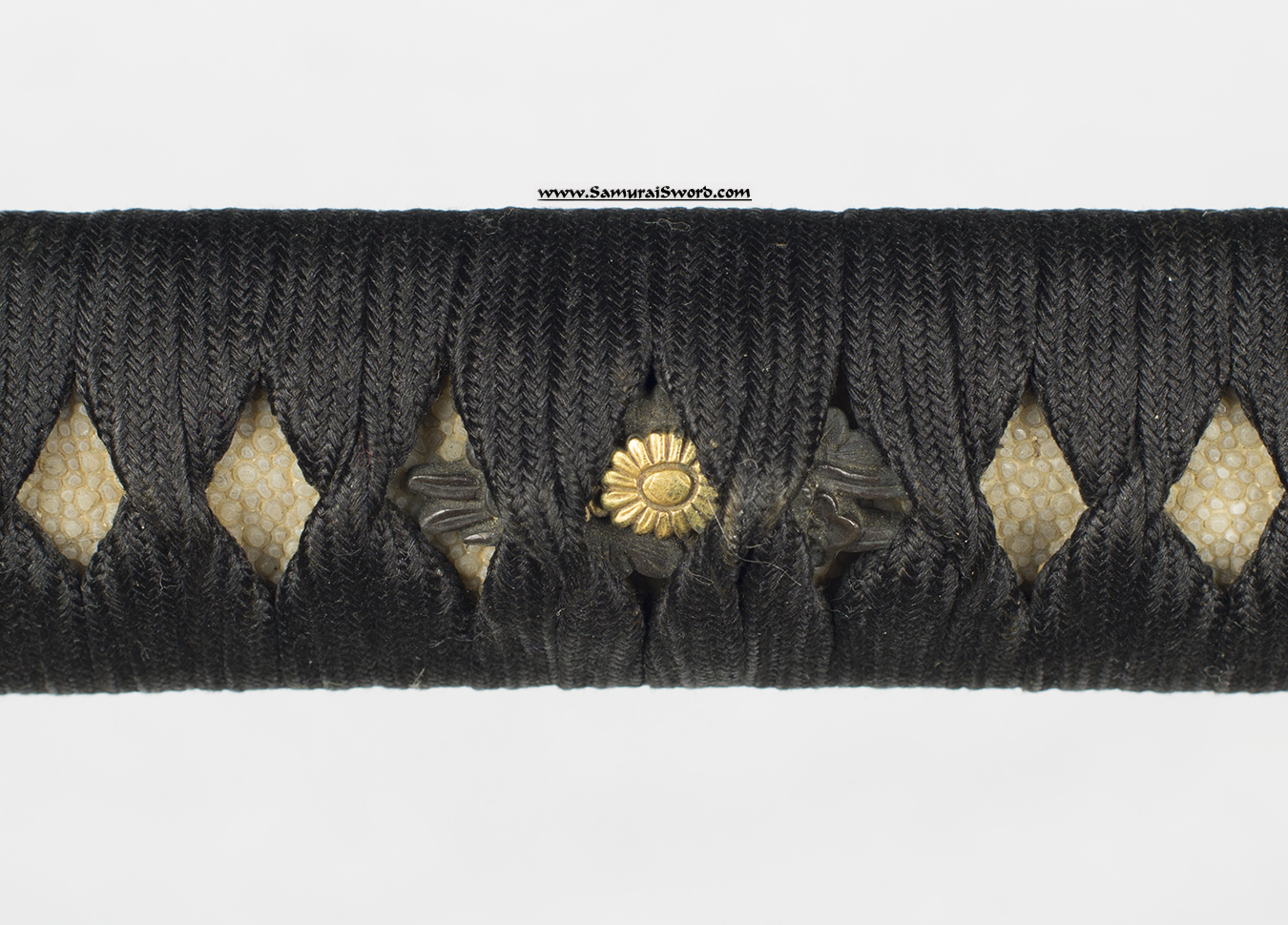
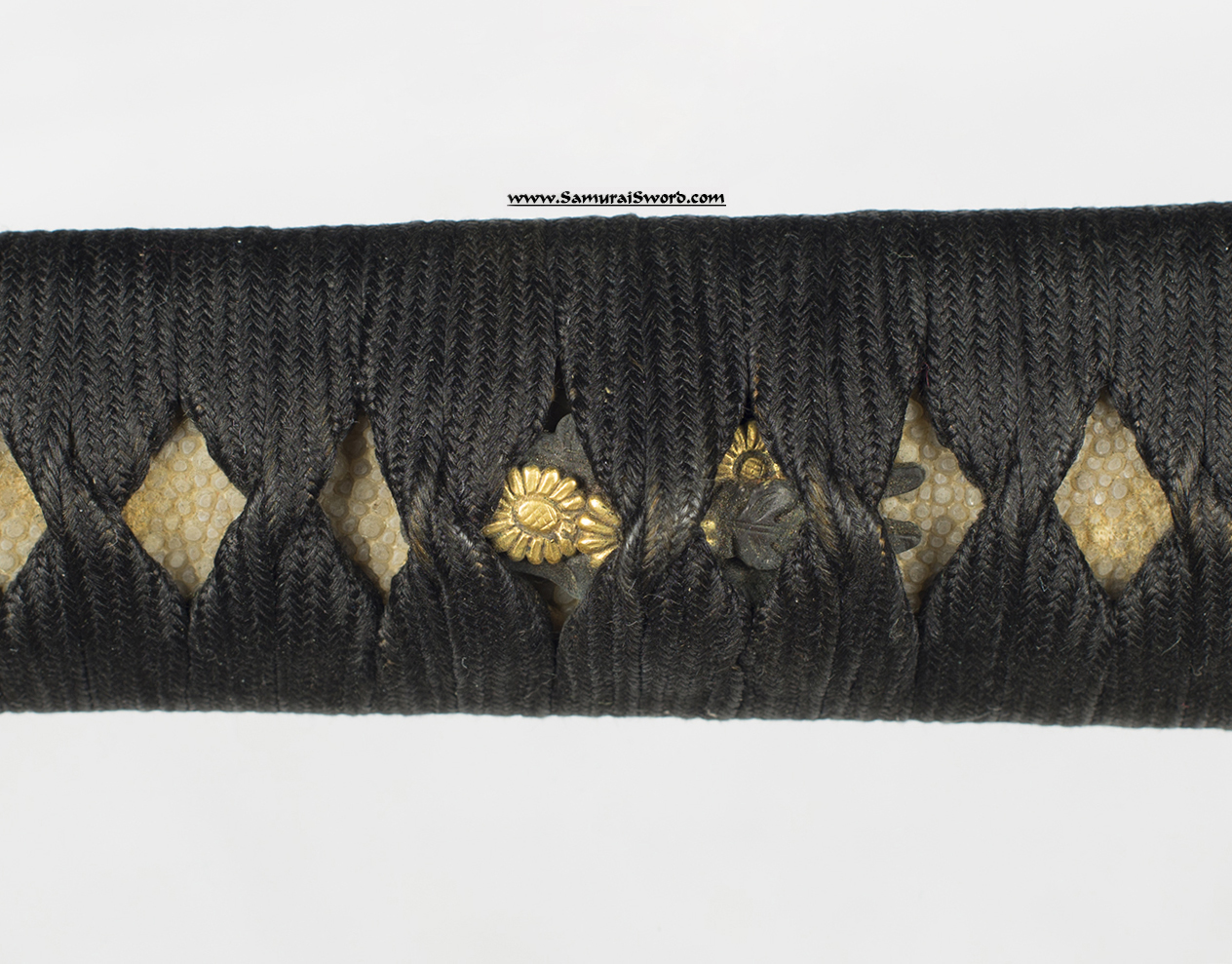
This Sword is not available for purchase.
If you wish to purchase a Japanese Sword please view our Nihon To for sale page or contact us directly via e-mail or telephone @ 1(608) 315-0083 any time, please include specifics of what you seek, i.e.: Katana, maker, era, price range etc.
Pictures and content may not be copied without the express permission of samuraisword.com © 2018